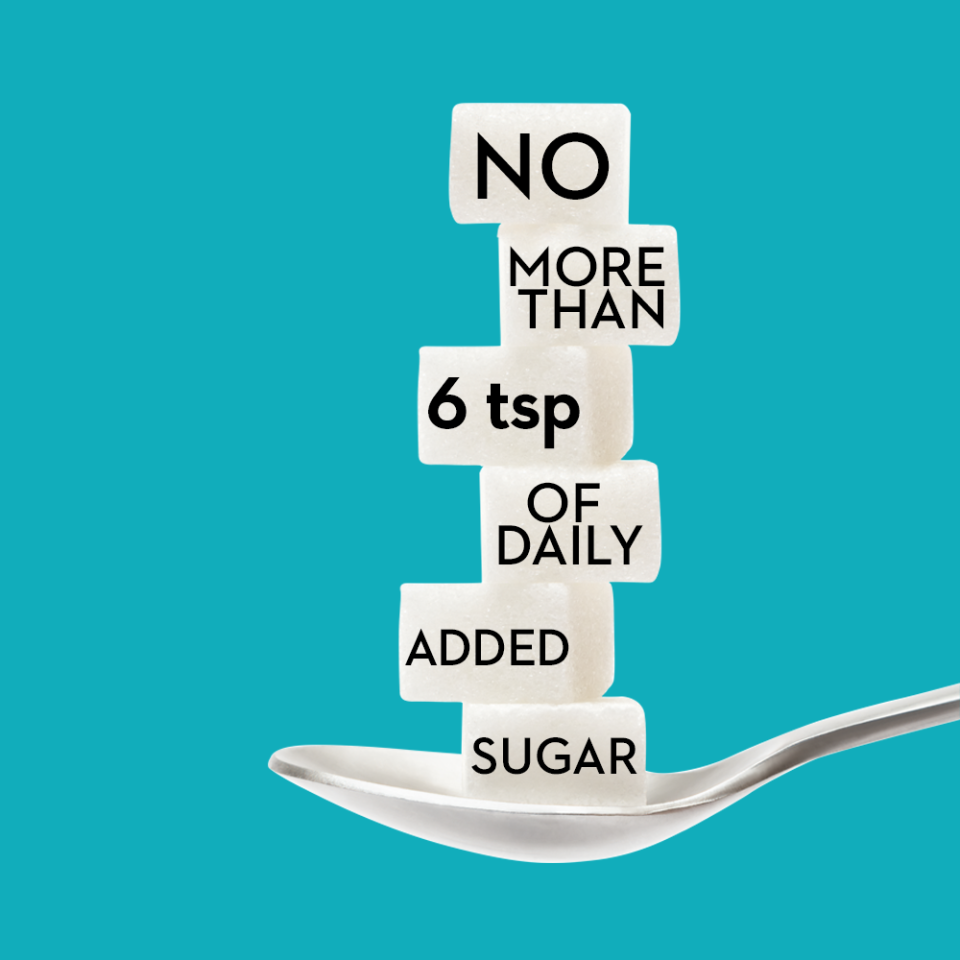A Nutritionist Explains the First Step in Starting Your No-Sugar Diet Journey

Following a no-sugar diet is a trending topic in the nutrition and weight loss space right now, but the concept itself isn’t so new. Although there is no formal diet plan or definition to follow, it typically involves avoiding added sugar while still allowing some natural sugar in your diet. Instead of counting calories, proponents of a no-sugar diet suggest you’ll lose weight by getting rid of added sugar once and for all.
First of all, you need to know what sugar is and why it could potentially be harmful.
Sugar itself does not fulfill any nutritional need and has virtually no nutritional value, which is why sugar is often referred to as empty calories. Although sugar enhances flavor, it can become quite addictive. Sugars include types of carbohydrates that can naturally occur in some foods, but are also an additive in certain foods and drinks. Consuming too much sugar can lead to several health problems and increase your risk for weight gain and diabetes. But that being said, not all sugars are created equal.
The difference between added sugar and natural sugar is important.
Naturally occurring sugars are found in food organically. These include fructose, which is found in fruit and root vegetables, lactose which is found in dairy products, and sucrose which is found in all different types of naturally occurring carbohydrates. Added sugar includes sugar that food manufacturers add to products to increase flavor or extend shelf life. In the Standard American Diet (SAD), top sources of added sugar include soda, fruit drinks, cereals, cookies, cakes, candy, flavored yogurts, and many processed foods.

Added sugars aren’t always so black-and-white, and can often disguise themselves in ingredients lists under names you might not be too familiar with. Some examples include:
Agave Nectar
Cane Sugar
Brown Sugar
Brown Rice Syrup
High Fructose Corn Syrup
Evaporated Cane Juice
Raw Sugar
Glucose
Turbinado Sugar
Honey
Palm Sugar
Molasses
Beet Sugar
Maple Syrup
Sucrose
Fructose
Barley Malt Syrup
Maltodextrin

It's also important to note how much sugar you're supposed to have in one day.
The American Heart Association (AHA) recommends a limit of no more than 25 grams (6 teaspoons) added sugar daily for women and no more than 36 grams (9 teaspoons) added sugar daily for men. This may sound like a lot, but to put things into perspective, one Grande Caramel Frappucino at Starbucks has 55 grams of sugar which is over double the amount recommended for women in a day. Just one 12-ounce can of regular soda contains eight teaspoons of sugar and has no nutritional value. The new nutrition facts label now requires companies to list how much added sugar is in their product, which can help you decipher between the amount of natural vs. added sugars in the food. Many people refer to a no-sugar diet as a sugar detox since it involves avoiding added sugar completely. This can be very difficult since the vast majority of packaged foods available have some form of added sugar.
If you do decide to do a no-sugar diet, it may help you lose weight.
Theoretically, following a no-sugar diet could help you shed pounds because many sugary foods are also high in empty calories. By decreasing your intake of added sugar, you’ll be cutting out a substantial amount of calories and therefore may see a decline in your weight. Choosing more nutritious carbohydrate sources that are filled with fiber, such as fruits and whole grains, can provide nutrition and satiety for a fraction of the calories of those sugary foods.
Here's how to start a no-sugar diet, if you're interested in giving it a try.
These tips from DJ Blatner, R.D.N., spokesperson for Now products and author of The Flexitarian Diet, will help you slowly wean your body off of added sugar.
First, keep a sugar log for a week to figure out where your sugar is coming from.
Now cut or make swaps! For the items on your sugar log that are the biggest culprits, buy no-sweetener versions and/or look for foods that give you the same vibe, without the added sugar. For example, if you've been buying sweetened applesauce, opt for an unsweetened version without added sugar or high fructose corn syrup, or try making your own!
Next, work on shifting your mindset from an "I love and need sugar!" one to an "I can survive without it" one. Making lifestyle changes that support a low-sugar mentality can help, says Blatner, such as eating three balanced meals a day to keep you satisfied, getting the recommended seven to eight hours of sleep a night, drinking plenty of water throughout the day, and getting at least 30 minutes of daily physical activity (a long walk counts!)
Now it's time to focus on what you're adding, not subtracting, from your diet. Enjoy the process of finding natural or no sugar swaps instead of ruminating about what you're not allowed to eat, and be curious enough to try new things with an open mind, Blatner says—this is the power of positive psychology!
As you follow the steps above, keep an eye out for these types of products, which the USDA says account for 70% of all added sugar consumed: sugar-sweetened beverages, packaged or homemade desserts and sweet snacks, sweetened coffee and tea, candy and sugary toppings like syrup or jam, and breakfast cereals and bars.
The bottom line: Reducing your intake of added sugar is great for your health, but do so gradually and sustainably. If you restrict too much, it may eventually backfire and lead to overeating those "forbidden" sugary foods. No one knows your body better than you. Some of us work well with an all-or-nothing mentality, while others may benefit from incorporating their favorite sugary foods in moderation on a semi-regular basis. When you do indulge, do so mindfully and sensibly.
You Might Also Like


